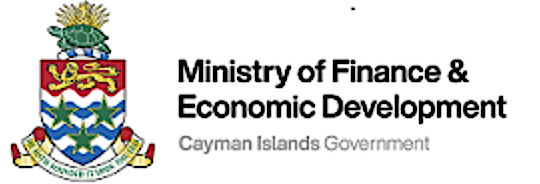Statement from Premier and Minister for Finance & Economic Development Hon. G. Wayne Panton, MP, JP On the local 30-day notice period for Interest Rate increases

Grand Cayman, 02 August 2023 – In light of the US Federal Reserve (the Fed) increasing the “prime” or “base” interest rate for borrowing by 0.25% on Wednesday, 26 July, I am pleased that the retail banks operating in the Cayman Islands will stand by their commitment to implement a 30-day notice period before passing this rate increase on to their customers.
This latest increase has brought the US Federal Reserve Rate to 5.5%, the highest it’s been in 22 years. The US prime rate is always 3% above the Federal Reserve Rate and it is this rate that the Cayman retail banks adopt as the Cayman Prime Rate as well. A further increase at the Fed’s September meeting is possible.
Butterfield Bank (Cayman) Limited and Cayman National announced prime rate increases in step with the Fed rate hike effective 25 August, and RBC Cayman has announced that it will also increase its prime rate from 8.25% to 8.5% effective 28 August.
This means that local borrowers and mortgage holders will have four weeks to prepare and adjust for the corresponding increases in their monthly loan and mortgage payments.
The Cayman Islands Bankers Association has agreed to implement this 30-day notice period for any further rate hikes by the Fed through June 2024.
You may recall that the local retail banks collectively agreed to this notice period following negotiations which I began with them in June 2022, and that I announced their agreement to give 30-days’ notice of interest rate increases at the Cayman Islands Chamber of Commerce Parliamentary Luncheon in June of this year.
My initial request was for a 60-day notice period, and that consideration be given to ending the practice of raising local rates in tandem with Fed rate hikes. While this is done automatically in the Cayman Islands, this is not the case in other jurisdictions, including our fellow British Overseas Territory of Bermuda.
Although the Fed temporarily paused its series of rate hikes to combat inflation in June, this current increase marks the 11th time that interest rates have gone up since the start of 2022.
Until now, retail banks in the Cayman Islands immediately passed these increases directly on to their customers with homeowners and other borrowers seeing their monthly payments increase significantly over the past 14 months.
That situation has clearly been difficult, especially when coupled with the Islands’ high cost of living with increased prices for food, utilities, gas, accommodation, and other necessities.
While there is very little that we can do locally to control the cost of food, fuel and other consumables, the decision to increase local interest rates and the timing thereof does lie within the local retail banks’ discretion and I am thankful that they collectively saw the need to at least delay the impact for Cayman’s borrowers by one month.
We all know that higher interest rates increase the price of borrowing and drive housing costs up by adding to property owners’ mortgage payments every month, affecting both homeowners and renters. Interest rate hikes also impact business owners, and their higher costs then get passed on to consumers.
While local banks have historically immediately increased interest rates in tandem with rate hikes by the Fed, there is no reason why this must continue to be the case.
Although I am appreciative of the banks’ compromise agreement to a 30-day notice period, I hope and expect that they will engage in further dialogue with the Government to determine how to further alleviate or potentially avoid the impact of future rate increases by the Fed.
We must guard against Caymanian homeowners potentially losing their homes due to the inability to meet increased interest charges, and local business struggling to keep up with their financing payments in addition to other high-level expenses.
In the meanwhile, I continue to encourage all borrowers, both residential and commercial, to investigate their options with lenders including fixed rate borrowing for periods of time and to maintain open lines of communication with their lending institutions.
ENDS





